Everyone is wearing sweatshirts and leggings: Why sportswear is taking over
The trend of everyday comfort is not just a result of the pandemic. Social and economic factors have caused athleisure to overtake traditional dress codes
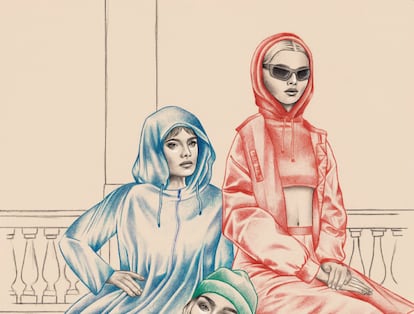
Many of the predictions made during the pandemic haven’t come true. Just over a year ago, we were talking about “getting dressed again” in the traditional sense of the term. Most of us spent 2020 and most of 2021 in sweats, prioritizing comfort over the nonexistent judgements of observers. But after that exception, trend forecasters heralded a return to excess in fashion. That hasn’t been the case. This summer and next winter, minimal garments combine with sports-inspired pieces. Luxury versions of sweatshirts, windbreakers, leggings and technical pants have appeared on the runways of Miu Miu, Diesel, Givenchy and Balenciaga. Recent cruise collections have reinforced the trend. Nicolas Ghèsquière at Louis Vuitton has recovered his obsession with neoprene and biker shorts. Gucci combines dresses with running tees. Even Chanel, which has spent a century and a half updating tweed jackets and black dresses as the quintessence of luxury, has opted to draw inspiration from the eighties fitness aesthetic.
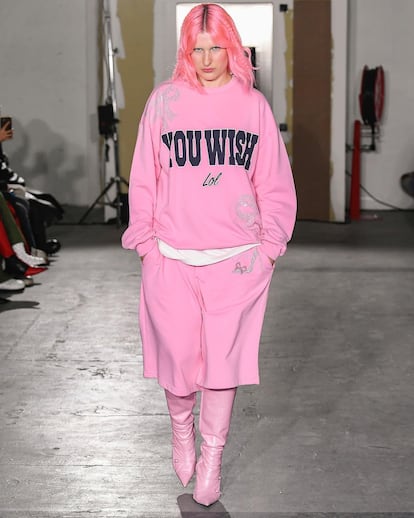
This is the premium version of what is happening on the streets. Consumers refuse to leave behind their athleisure clothing. “The reality is that Covid-19 has caused changes in behavior — many companies have definitely implemented flexible work structures — and changes in thinking. The most important change is the impact on our minds. The desire for safety, comfort and the outdoors remains. Athleisure is a response to that,” says Patricia SanMiguel, marketing professor at ISEM Fashion Business School. It is estimated that the market of sports clothing for daily use will reach almost €550,000 (about $594,800) in 2024, according to data from Allied Market Research.
Edited, the platform that shares consumer data with brands, affirms that “the sports market for women will grow at a good pace in the coming years, despite being a segment historically linked to male consumption. In the same way, the garments used in sports traditionally practiced by women, like yoga, are receiving male demand.” The truth is, though, that the pandemic did not unleash the fever for comfortable technical clothing. It only accelerated it. The word “athleisure” entered the Merriam-Webster dictionary in 2016, a sign that the trend had long before installed itself in our closets, and not just because of pragmatism.
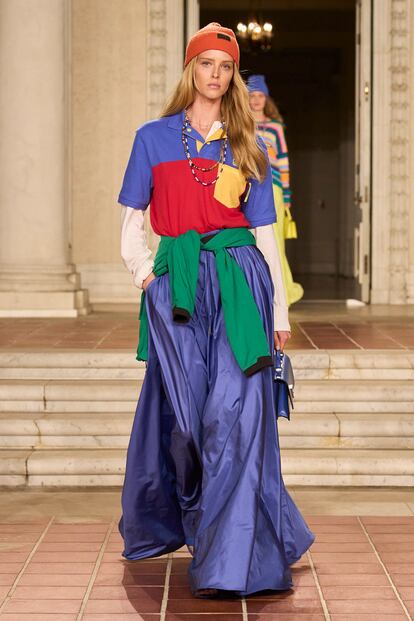
From the piqué tenis polos patented by René Lacoste in the 1930s, to the university name sweatshirts popularized by Ivy League students in the fifties, to today’s yoga pants, one thread can be traced: status. That may be because certain activities — golf, sailing and tennis, for instance — are traditionally linked to certain social groups, or simply because being in shape is a sign of a lifestyle of leisure. That logic could explain why, at the turn of the century, many global sportswear brands decided to collaborate with cult designers like Yohji Yamamoto, Raf Simons and Stella McCartney. But it also explains why brands like Lululemon, the Canadian brand that began offering yoga outfits in the nineties, became a global symbol of wealth. “Our focus on technical garments allowed us to benefit from wellness trends in consumer behavior, which are more important every year,” says Sarah Clark, Lululemon’s Vice President for Europe, Africa and the Near East. She points out that Lululemon “expands its range of products according to what its community demands.”
Today, the brand sells underwear, swimsuits and even tennis-inspired sports dresses, though the garments for yoga and pilates remain its most popular. It isn’t just about having a healthy lifestyle, but about showing it off, whether at the office, on the street or in an Instagram post. That’s why a €600 ($648) Patagonia mountain jacket symbolizes almost as much as a designer handbag. Brands like Moncler are experiencing a new golden age. The younger brand Outdoor Voices, whose motto is “technical apparel for recreation,” made $90 million in 2022.
“The biggest style right now is the combination of sports garments with formal garments for work and designs with a retro touch, like blazers with baseball caps and sweatpants with dress shoes,” says ISEM, noting that there isn’t just one demographic of consumers who are drawn to those looks. “We found young millennial women, between 25 and 40, who want to go to work with a look compatible with a dynamic lifestyle, in which in a single day you find yourself in many different situations, and many college students and teens who believe that being comfortable is compatible with taking care of their appearance.”
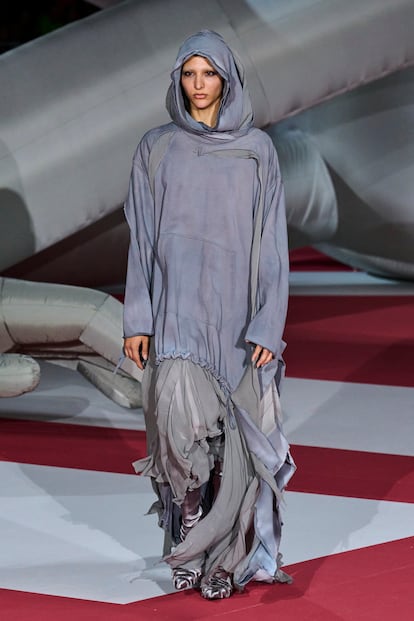
The sweatsuit as a response to uncertainty
For years, fast fashion brands have based their designs on luxury runway trends. Skims, the shapewear brand that Kim Kardashian founded in 2019 with Emma and Jens Grede, has become, according to the magazine Business of Fashion, the most-imitated brand, in addition to having made $600 million in 2022. Of course, part of its success resides in its owner’s influence. But with its basic garments in neutral colors, Skims brings together the main social and material reasons that athleisure has taken over our wardrobes: innovative materials, inclusive sizing, accessible prices and garments that transcend seasons.
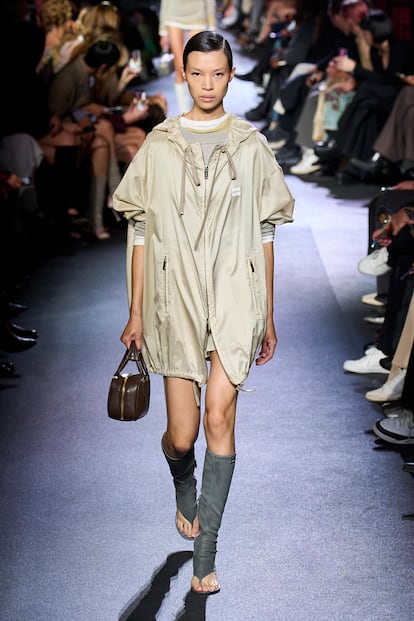
From synthetic fibers to waterproof fabric, Spanx and neoprene, textile innovations have always begun in the sportswear market, later reaching the fashion world. “In addition to comfort, consumers have begun to demand that the garments they use every day, beyond athletics, have certain technical characteristics,” explains the vice-president of Lululemon. Whatever the circumstance, we have come to value lightness, resistance and even temperature regulation as criteria in our purchases. “From a business perspective, our inventory, which is based on key central seasonless styles, helps us to navigate and mitigate interruptions in the supply chain,” she explains. That idea can be applied to many sportswear brands, which base their identity on pieces that repeat season after season. Today, sportswear is a practical alternative to economic uncertainty. The sweatsuit is not, as Karl Lagerfeld said, a sign of defeat, but a symbol of resilience.
Sign up for our weekly newsletter to get more English-language news coverage from EL PAÍS USA Edition
Tu suscripción se está usando en otro dispositivo
¿Quieres añadir otro usuario a tu suscripción?
Si continúas leyendo en este dispositivo, no se podrá leer en el otro.
FlechaTu suscripción se está usando en otro dispositivo y solo puedes acceder a EL PAÍS desde un dispositivo a la vez.
Si quieres compartir tu cuenta, cambia tu suscripción a la modalidad Premium, así podrás añadir otro usuario. Cada uno accederá con su propia cuenta de email, lo que os permitirá personalizar vuestra experiencia en EL PAÍS.
¿Tienes una suscripción de empresa? Accede aquí para contratar más cuentas.
En el caso de no saber quién está usando tu cuenta, te recomendamos cambiar tu contraseña aquí.
Si decides continuar compartiendo tu cuenta, este mensaje se mostrará en tu dispositivo y en el de la otra persona que está usando tu cuenta de forma indefinida, afectando a tu experiencia de lectura. Puedes consultar aquí los términos y condiciones de la suscripción digital.











































